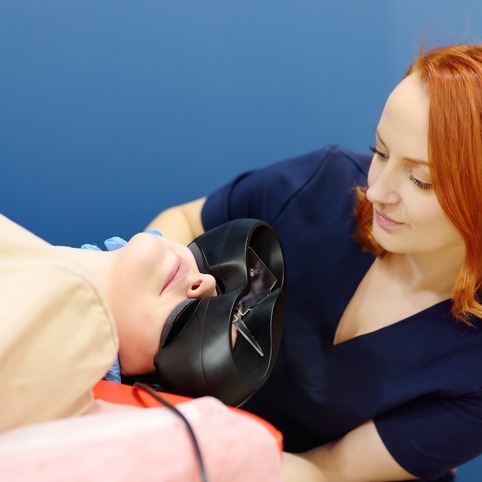
Vestibular rehabilitation exercises play a crucial role in managing dizziness and balance disturbances caused by vestibular disorders. These exercises, including gaze stabilization techniques and maneuvers such as the Epley, are designed to retrain the brain’s ability to interpret and adapt to altered vestibular signals. By enhancing coordination and postural control, they can significantly reduce the risk of falls and improve overall functional stability. However, their success depends on correct execution, individualized programming, and adherence to safety guidelines. A deeper understanding of these interventions and the factors that influence their effectiveness can lead to more favorable outcomes for patients. So, what determines their success?
Key Takeaways
Vestibular rehabilitation exercises, such as gaze stabilization, help improve focus on stationary objects during head movements, thereby reducing dizziness.
Cawthorne-Cooksey exercises promote relaxation of the neck and shoulder muscles, supporting improved balance and overall comfort.
Canalith repositioning procedures, including the Epley maneuver, are effective in treating benign paroxysmal positional vertigo (BPPV).
Brandt-Daroff exercises provide a home-based method for retraining the brain to enhance balance and reduce dizziness.
Consistent practice of these exercises can significantly improve mobility and reduce the risk of falls.
Overview of Vestibular Rehabilitation
Vestibular rehabilitation therapy (VRT) is a specialized approach designed to alleviate dizziness and improve balance in individuals with vestibular disorders, such as vertigo and benign paroxysmal positional vertigo (BPPV). The therapy typically involves a personalized program of exercises that stimulate the vestibular system, helping retrain the brain to process balance-related information more effectively. Usually conducted over a period of six to eight weeks, VRT relies on consistent practice to manage symptoms and promote functional improvement.
Research has shown that VRT can significantly reduce dizziness, enhance balance, and lower the risk of falls—ultimately improving patients' overall quality of life. Regular follow-ups with healthcare providers are essential to monitor progress and adjust the exercise regimen as needed, ensuring both safety and optimal therapeutic outcomes.
Key Vestibular Rehabilitation Exercises
Effective management of vestibular disorders relies on a range of targeted exercises designed to improve balance and reduce dizziness. Key vestibular exercises include gaze stabilization, which enhances the ability to focus on stationary objects during head movements, supporting recovery from inner ear dysfunction. Cawthorne-Cooksey exercises promote relaxation of the neck and shoulder muscles while incorporating balance and head movements that may initially provoke dizziness, thereby helping the brain adapt.
Canalith repositioning procedures, such as the Epley and Semont maneuvers, effectively treat benign paroxysmal positional vertigo (BPPV) by repositioning dislodged crystals (otoconia) within the inner ear. Additionally, Brandt-Daroff exercises provide a home-based strategy for retraining the brain to ignore misleading vestibular signals. With regular and properly guided practice, these exercises can significantly reduce dizziness and improve balance over time.
Benefits of Vestibular Rehabilitation
While individuals suffering from balance disorders may experience persistent dizziness and instability, engaging in vestibular rehabilitation therapy (VRT) offers numerous benefits that can enhance their quality of life. The following advantages highlight the effectiveness of VRT:
Improve Quality of Life: Engaging in vestibular rehabilitation therapy can significantly enhance daily functioning and well-being for those with balance disorders.
Reduce Dizziness: Regular participation in vestibular exercises can substantially alleviate dizziness symptoms.
Improve Coordination: VRT helps retrain the brain's interpretation of vestibular signals, leading to better coordination and control.
Lower Fall Risk: Improved balance decreases the likelihood of falls, a common and serious concern for individuals with vestibular disorders.
Enhance Mobility: Consistent VRT can lead to greater overall mobility, supporting a more active and independent lifestyle.
Safety Considerations During Exercises
When engaging in vestibular rehabilitation exercises, ensuring safety is paramount to prevent injury and enhance the effectiveness of the therapy. Exercises should always be performed in a safe environment, free from obstacles that could cause falls. Having a support person present during initial sessions is advisable—especially if dizziness occurs—as they can provide necessary assistance. It is also important to use stable surfaces, such as a flat floor or wall, to reduce the risk of losing balance. Participants should remain vigilant about their surroundings and be aware of any potential hazards. If symptoms escalate or nausea develops, it is crucial to stop the exercises immediately. Safety must always take precedence over progression in the rehabilitation process.
When to Consult a Healthcare Professional
Consulting a healthcare professional is essential if an individual experiences persistent dizziness or imbalance that interferes with daily activities, as these symptoms may indicate an underlying vestibular disorder. It is important to seek medical guidance before beginning any vestibular rehabilitation exercises to ensure a safe and personalized approach. Additionally, individuals should consult a healthcare provider in the following situations:
If you experience persistent dizziness or imbalance, as it may signal a vestibular disorder.
If dizziness worsens or new symptoms develop during exercises.
When symptoms of vertigo or imbalance persist despite completing a rehabilitation program.
To receive regular follow-up evaluations that help monitor progress and adjust the rehabilitation plan as needed.
If dizziness significantly affects your mental health or overall quality of life.
Prompt attention to these symptoms can support more effective treatment and improve recovery outcomes.
Conclusion
In summation, vestibular rehabilitation exercises offer more than just symptom relief—they represent a transformative path from persistent dizziness to restored balance and confidence. These targeted movements empower individuals to regain control over their physical stability and daily lives. With consistent practice and strong collaboration with healthcare providers, patients can achieve significant improvements in coordination, leaving behind the limitations of imbalance and embracing a renewed sense of independence.
Frequently Asked Questions
How Do You Reset Your Vestibular System?
Resetting the vestibular system involves performing specific movements and exercises designed to promote balance and stability. With regular practice—ideally under the guidance of a healthcare professional—the brain learns to adapt and process vestibular input more effectively, helping to reduce symptoms of dizziness.
What Are the Four Components of Vestibular Rehab?
The four main components of vestibular rehabilitation are gaze stabilization, balance training, habituation exercises, and functional mobility training. Each element targets different aspects of dizziness and balance control, working together to enhance stability and restore independence in daily activities.
Do Vestibular Exercises Really Work?
Yes, vestibular exercises have been shown to be effective. Research consistently demonstrates significant improvements in balance and reductions in dizziness, offering real hope for individuals managing vestibular disorders.
Can You Overdo Vestibular Exercises?
Yes, overdoing vestibular exercises can lead to increased dizziness, fatigue, or nausea. It's important to monitor your symptoms and adjust the intensity or frequency of exercises as needed, ideally with professional guidance, to support a safe and effective recovery process.
CIPA-Certified Canadian Pharmacies Provide Safe, Effective Prescription Drugs https://Drugmart.com is a CIPA-member Canadian prescription referral service with hundreds of medications at incredible savings. We source from reputable pharmacies located in the United Kingdom, New Zealand, Australia and Canada. We offer non-prescription Canada drugs and pet medications, too!
Rest assured, even though you may receive your medication from a country other than Canada, because your order is placed through https://Drugmart.com - which is a CIPA sanctioned seller - it's just as safe as if it were shipped directly from our Canadian pharmacy.
If you need expert advice, https://Drugmart.com can connect you with a team of licensed pharmacists to address your concerns. Our customer service team will help with any questions you may have. You can also check out our list of FAQs to get answers to the most-asked questions we receive. Find your prescription, create an account and start saving on your meds from https://Drugmart.com today!
Sources
Meldrum D, Jahn K. Gaze stabilisation exercises in vestibular rehabilitation: review of the evidence and recent clinical advances. J Neurol. 2019 Sep;266(Suppl 1):11-18. doi: 10.1007/s00415-019-09459-x. Epub 2019 Aug 5. PMID: 31385017.
Kanyılmaz T, Topuz O, Ardıç FN, et al. Effectiveness of conventional versus virtual reality-based vestibular rehabilitation exercises in elderly patients with dizziness: a randomized controlled study with 6-month follow-up. Braz J Otorhinolaryngol. 2022 Nov-Dec;88 Suppl 3(Suppl 3):S41-S49. doi: 10.1016/j.bjorl.2021.08.010. Epub 2021 Oct 26. PMID: 34799265; PMCID: PMC9760985.
Herdman SJ. Vestibular rehabilitation. Curr Opin Neurol. 2013 Feb;26(1):96-101. doi: 10.1097/WCO.0b013e32835c5ec4. PMID: 23241567.
Sulway S, Whitney SL. Advances in Vestibular Rehabilitation. Adv Otorhinolaryngol. 2019;82:164-169. doi: 10.1159/000490285. Epub 2019 Jan 15. PMID: 30947180.
Meng L, Liang Q, Yuan J, et al. Vestibular rehabilitation therapy on balance and gait in patients after stroke: a systematic review and meta-analysis. BMC Med. 2023 Aug 25;21(1):322. doi: 10.1186/s12916-023-03029-9. PMID: 37626339; PMCID: PMC10464347.
Dunlap PM, Holmberg JM, Whitney SL. Vestibular rehabilitation: advances in peripheral and central vestibular disorders. Curr Opin Neurol. 2019 Feb;32(1):137-144. doi: 10.1097/WCO.0000000000000632.





